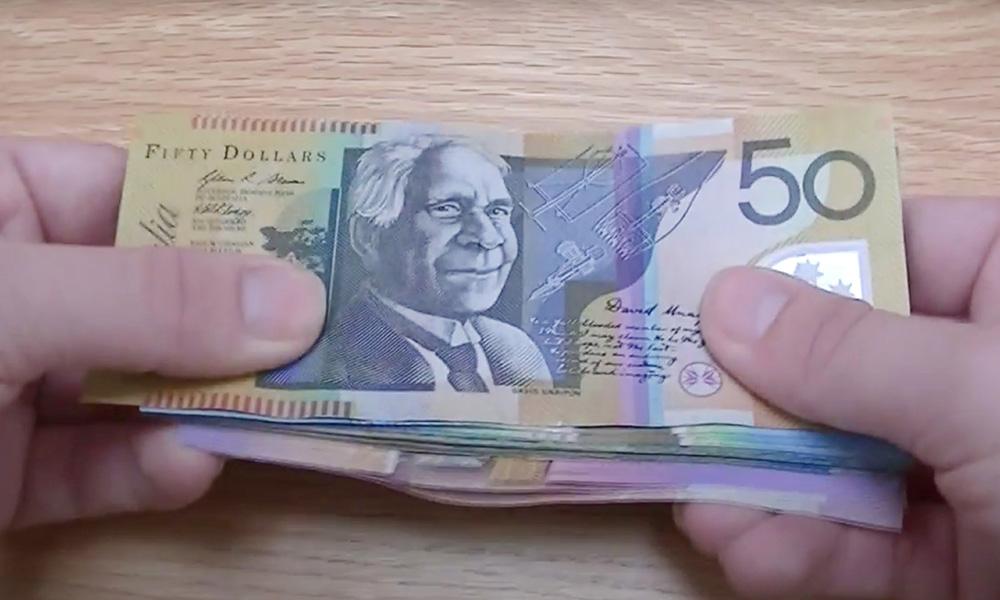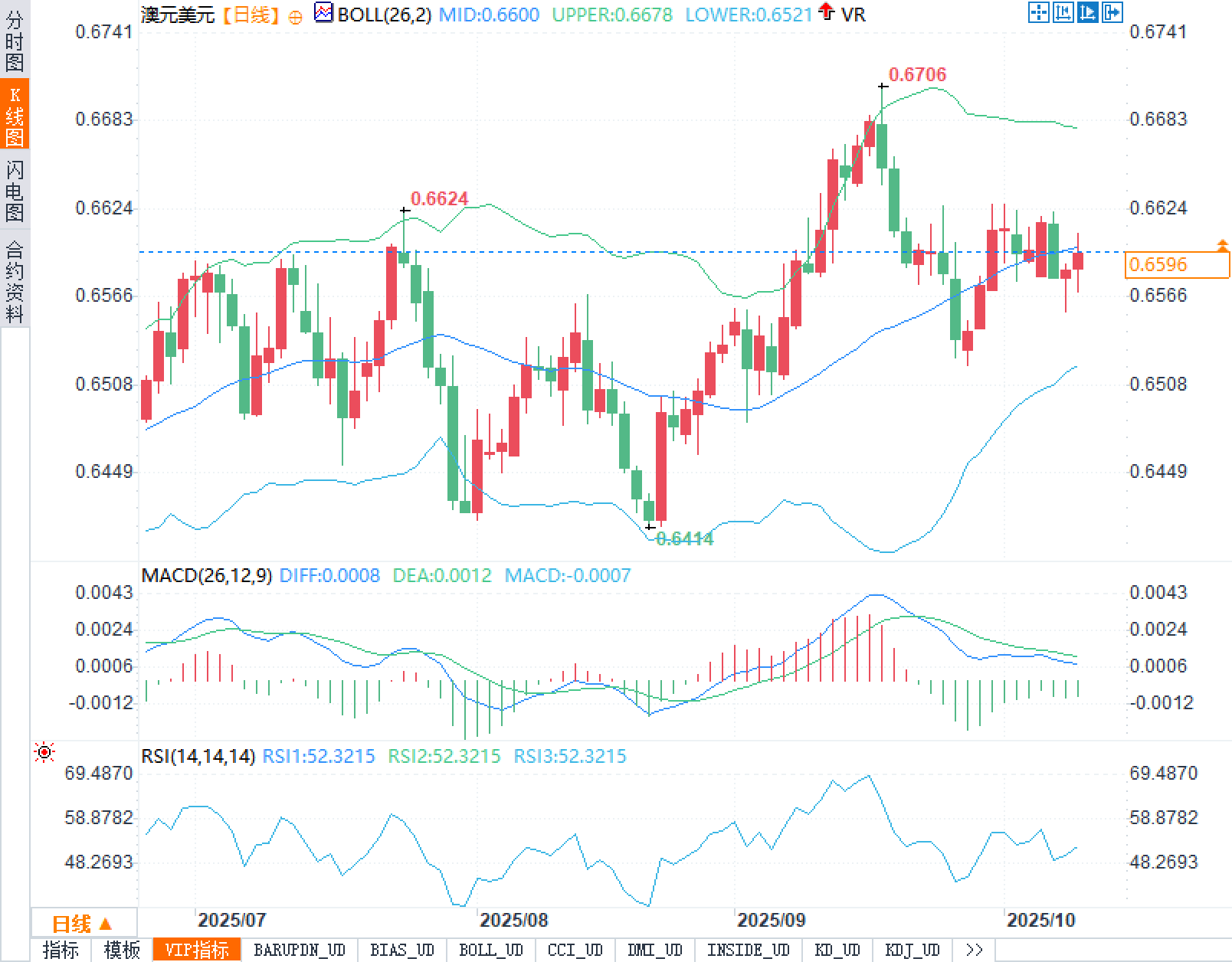The Fed hinted at a dovish stance again, but the Australian dollar stopped at 0.66: Where does the rebound end?
2025-10-09 18:58:40

Fundamentals:
The Federal Reserve's September meeting minutes and dot plot continued the theme of further rate cuts this year. The minutes showed that a majority of members believed a move closer to the "neutral rate" was appropriate, citing "rising downside risks to employment and diminished or no increase in upside risks to inflation." Almost all members voted in favor of a 25 basis point rate cut, with a minority favoring a larger cut. The latest dot plot indicates a year-end target for the federal funds rate of 3.6%, reflecting a consensus of two more rate cuts this year. Echoing this, CME FedWatch indicates an "extremely high" probability of another rate cut this month, with a 78.6% probability of another in December. These expectations caused the US dollar to retreat in the initial period following the minutes' release, but the US dollar index has now rebounded to around 99.00, reasserting its control over non-US currencies.
On the fiscal front, uncertainty stems from the ongoing risk of a federal government shutdown. The market is assessing the potential impact of the shutdown on macroeconomic data releases, the pace of fiscal spending, and employment. The White House has signaled potential program cuts and federal agency staffing changes in the next four to five days. If fiscal uncertainty intensifies, fluctuations in US Treasury yields will amplify the dollar's short-term direction, thereby increasing volatility and the risk of a false breakout in the Australian dollar against the US dollar.
In Australia, the Australian dollar's relative resilience stems from weakening bets on further rate cuts by the Reserve Bank of Australia (RBA) this year: inflation remains sticky. A recent survey from the University of Melbourne shows that 12-month consumer inflation expectations rose from 4.7% in September to 4.8% in October. Combined with the higher-than-expected stickiness of core inflation, the market is inclined to believe that the RBA is more inclined to adopt a "wait-and-see-and-assess" approach in the short term, rather than continued easing. This gives the Australian dollar a slight advantage relative to its non-US peers, but with the dollar's rebound offsetting it, this advantage is unlikely to translate into a sustained break above 0.66.
In terms of the event path, Powell's speech will be interpreted on two points: first, the threshold of disruption to the policy path and economic outlook caused by the government shutdown; and second, when employment demand will return to a "closer to equilibrium" trajectory. If his speech continues to emphasize "both growth and inflation are declining—further easing is still needed, but data-dependent," the US dollar may experience a temporary pullback, opening up room for the Australian dollar to test its mid-range against the US dollar. Friday's Michigan data will serve as a quick calibrator of the "sentiment-inflation expectations" relationship. If inflation expectations unexpectedly decline in October, defensive buying of the US dollar will weaken.
Technical aspects:
The daily chart shows the middle Bollinger Band at 0.6600, the upper Bollinger Band at 0.6678, and the lower Bollinger Band at 0.6521. The exchange rate is currently trading close to the middle band, indicating a "mean reversion with the middle band as ballast." The upward trend from August to September peaked at 0.6706, followed by a three-day decline and two unsuccessful rebounds in a "retracement" to retest the middle band. During this period, the exchange rate produced a lower shadow near 0.6624, but failed to translate into a breakout.

In terms of momentum, the DIFF of the MACD is 0.0008 and the DEA is 0.0012. The DIFF has slightly crossed below the signal line. The MACD histogram has turned green at -0.0007, indicating that the daily momentum has transitioned from "positive deceleration" to "slightly negative", which is consistent with the sideways movement of prices close to the middle line. In terms of strength and weakness indicators, the RSI (14) is 52.3215, above the 50 axis but far from overbought, a typical "neutral slightly bullish" reading.
According to the price-band-momentum resonance principle, the middle Bollinger band of 0.6600 is currently the most critical "dynamic pivot." If it stabilizes above it, the upper band of 0.6678 and the previous peak of 0.6706 will form a continuous resistance zone. If it falls below the middle band, the lower Bollinger band of 0.6521 will provide the first dynamic support. Further failure will trigger a retest of 0.6414 (the previous low).
Overall, the structure hasn't yet signaled a directional "volume breakout," but the combination of the "buy-sell battle on the middle Bollinger Band" and a slightly weakening MACD suggests a short-term bias toward range-bound consolidation with frequent false breakouts. Support/resistance references: 0.6521/0.6414; resistance: 0.6678/0.6706.
Market outlook:
Short-term: The path depends on the impact of Powell's speech and the subsequent impact of the Michigan data. If Powell emphasizes that "slowing growth and cooling employment are emerging," the US dollar may retreat, and the Australian dollar against the US dollar is expected to stabilize above 0.6600 and initiate a retest of 0.6624/0.6678. If the speech focuses more on "inflation stickiness and financial conditions remain to be seen," the US dollar's secondary rebound may continue, pushing the exchange rate back towards 0.6521.
- Risk Warning and Disclaimer
- The market involves risk, and trading may not be suitable for all investors. This article is for reference only and does not constitute personal investment advice, nor does it take into account certain users’ specific investment objectives, financial situation, or other needs. Any investment decisions made based on this information are at your own risk.





















